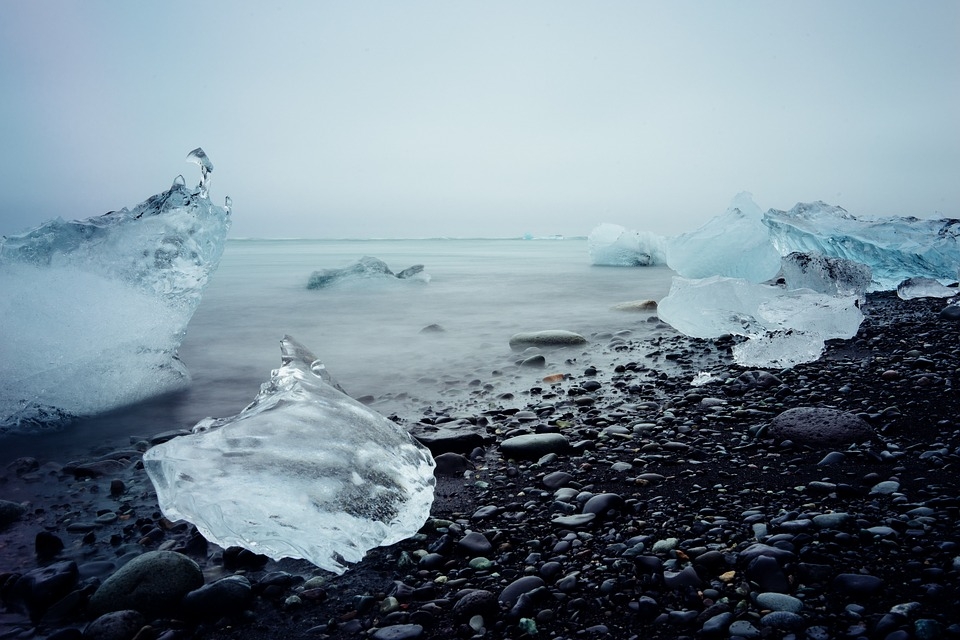The world is also battling the long-term effects of climate change in the form of rising temperatures and growing holes in the ozone layer. Scientists have now revealed that the sea ice within the Arctic is now melting due to the warming planet.
A study by an international group of scientists found that part of the cause of the melting sea ice in the Arctic region between 1980 and 2015 was due to river heat. This is equal to losing 120,000 square miles of ice that is one meter thick. The findings were published in the journal Science Advances and suggest that the recent findings were actually twice the amount compared to before.
“If Alaska were covered in one-meter thick ice, 20 percent of Alaska would be gone,” said Igor Polyakov of the University of Alaska who is also co-author of the study.
“The increasing ice-free area in the shelf seas results in a warmer ocean in summer, enhancing ocean-atmosphere energy exchange and atmospheric warming,” wrote the researchers in the study. According to their findings, the effects of river heat on the ice were most prominent in the Siberian Arctic, as there are a number of large rivers that flow into the shallow shelf region extending nearly 1,000 miles offshore.
As the global temperatures increase, Dr. Polyakov said that the rivers will grow warmer and lead to more melted sea ice. Because the river temperatures will rise, it will prove to be bad for the Arctic in the form of water and air.
Rising sea levels are just one of the long-term effects of climate change. The changing temperatures of the world will also lead to animals losing their habitats. Researchers have already warned that climate change has already led to a loss of habitat for animals by 18 percent, which is already a big number, but if no action was taken as soon as possible, that number would only go up by the end of the century.
Should more animals lose their habitats, they would be forced to live closer to humans and increase the probability of humans contracting zoonotic diseases. This means diseases that originate from animals that transfer onto humans.



 Synthetic human embryos let researchers study early development while sidestepping ethical and logistical hurdles
Synthetic human embryos let researchers study early development while sidestepping ethical and logistical hurdles  What if whales took us to court? A move to grant them legal personhood would include the right to sue
What if whales took us to court? A move to grant them legal personhood would include the right to sue  Frozen in time: old paintings and new photographs reveal some NZ glaciers may soon be extinct
Frozen in time: old paintings and new photographs reveal some NZ glaciers may soon be extinct  Could a telescope ever see the beginning of time? An astronomer explains
Could a telescope ever see the beginning of time? An astronomer explains  The brightest object in the universe is a black hole that eats a star a day
The brightest object in the universe is a black hole that eats a star a day  From the coast to the deep sea, changing oxygen levels affect marine life in different ways
From the coast to the deep sea, changing oxygen levels affect marine life in different ways  Alpha, beta, theta: what are brain states and brain waves? And can we control them?
Alpha, beta, theta: what are brain states and brain waves? And can we control them?  The mystery of consciousness shows there may be a limit to what science alone can achieve
The mystery of consciousness shows there may be a limit to what science alone can achieve  River deltas are threatened by more than climate change – leaving hundreds of millions of people at risk
River deltas are threatened by more than climate change – leaving hundreds of millions of people at risk  Why the long face? Experts provide a new theory for why larger mammals tend to have longer faces
Why the long face? Experts provide a new theory for why larger mammals tend to have longer faces  IceCube researchers detect a rare type of energetic neutrino sent from powerful astronomical objects
IceCube researchers detect a rare type of energetic neutrino sent from powerful astronomical objects  Why now is the time to address humanity’s impact on the moon
Why now is the time to address humanity’s impact on the moon 































